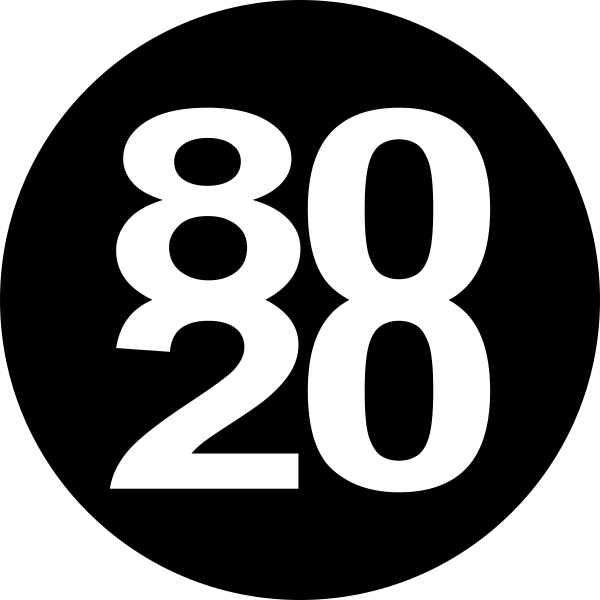80/20 Rule in
Diet
Simple Eating Habits That Create Most of Your Health Results
Most people don’t struggle because they never eat healthy food – they struggle because a small set of habits and foods quietly drive most of their results. A few routines, a few trigger foods, a few eating situations often account for the bulk of weight gain or energy crashes. That’s the 80/20 Rule in diet: roughly 20% of what you eat and how you eat creates about 80% of the impact on your body.
When you see nutrition this way, you can stop chasing perfect meal plans and focus on the few changes that matter most.
How 80/20 Shows Up in What You Eat
In many lives, you’ll notice simple patterns:
- About 20% of your meals (often late‑night snacks, weekend takeout, sugary drinks) can account for the majority of excess calories.
- You probably eat ~20% of your favorite foods 80% of the time – your “default” breakfasts, lunches and snacks.
- A small number of situations – tired evenings, social events, stress episodes – produce most of your off‑plan eating.
Instead of trying to control every bite, you can focus on reshaping those few high‑impact patterns.
Step 1: Lock In a “Core 80%” of Nourishing Foods
One way to use 80/20 in diet is to aim for roughly 80% of what you eat to be nutrient‑dense, minimally processed foods, leaving up to 20% for flexibility.
- Base most meals on vegetables, fruit, quality protein, legumes and whole grains.
- Keep a short list (10–20 items) of “always in the house” staples: e.g. eggs, oats, yogurt, beans, frozen veggies, nuts.
- Design 3–5 simple go‑to meals you can repeat without much thought.
Real-life example: Instead of chasing new recipes weekly, Sara built a rotation of five weekday dinners she liked and could cook quickly. Those meals – maybe 20% of her total recipe repertoire – made up ~80% of her weekly calories and kept her diet steady.
8020 move: Write down 3 breakfasts, 3 lunches and 3 dinners that are both realistic and nourishing. Make these your default, and let variety come from spices and sides, not constant overhauls.
Step 2: Tame the 20% of Foods That Cause 80% of Trouble
Most people have a few “danger zone” foods or combos – things that, once opened, are hard to stop eating or that are easy to overconsume mindlessly.
- Notice which foods you tend to overeat (chips, sweets, certain takeout, sugary drinks).
- Change how you keep or access them: smaller packages, less frequent purchase, single‑serve when possible.
- Pair them with structure (only after a meal, only on specific days) instead of banning them outright.
Real-life example: Mark realized that late‑night sweets 3–4 times per week were adding hundreds of calories. By shifting dessert to earlier in the evening and buying smaller portions, he kept the pleasure but cut most of the downside.
8020 move: Choose one high‑impact food habit to change (for example: soda at lunch, nightly ice cream, constant office snacks). Adjust that first before worrying about everything else.
Step 3: Focus on a Few Key Situations, Not Every Meal
Certain contexts are responsible for most off‑plan eating: evenings after work, weekends, social events, travel, or eating while distracted.
- Identify 2–3 situations where you routinely feel out of control with food.
- Create simple “if‑then” rules for those moments (e.g. “If I get home exhausted, I heat a frozen healthy meal before snacking”).
- Plan ahead: eat a small protein‑rich meal before events, bring snacks for travel, pre‑decide what you’ll order at restaurants.
Real-life example: Once Julia started eating a solid afternoon snack, 80% of her evening binges faded. The situation – coming home starving – had been the main driver, not a lack of willpower.
8020 move: Choose one recurring “problem time” and design a slightly better script for it. Improving that single 20% of your week can dramatically change how the other 80% feels.
Step 4: Use the 80/20 Rule for Flexibility, Not Perfection
The point of 80/20 eating isn’t strict math; it’s a mindset: most of the time you choose foods that support your health, and some of the time you enjoy foods purely for pleasure without guilt.
- Think in weeks, not single days – one indulgent meal doesn’t define your diet.
- Allow treats intentionally (the “20%”) instead of as constant, unplanned extras.
- Return to your core 80% pattern after celebrations or trips, rather than “starting over” with extreme diets.
Real-life example: Instead of oscillating between strict diets and giving up, Amir aimed for “mostly good, sometimes fun.” Over months, his average choices shifted enough to change his weight and energy, without feeling like he was always on a diet.
8020 move: Decide what your 20% looks like: a dessert a few times per week, favorite foods on weekends, or one relaxed meal when out with friends. Make that part of the plan, not a failure.
Diet as a Long-Term 80/20 Game
Lasting change comes less from perfect discipline and more from redesigning a few core habits and environments. By locking in a simple base of nourishing foods, taming your biggest trigger foods, planning for your most challenging situations and allowing some flexible 20%, you make healthy eating easier to maintain.
You don’t need to control 100% of your meals. Aim to make the majority of your choices work for you, and be kind to yourself about the rest. Over time, that small, consistent 20% of better decisions will create most of the results you’re looking for.
